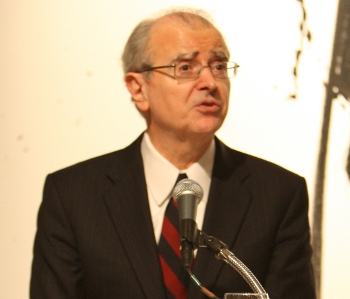In-School Mediation: Conflict Resolution in a Brooklyn School
At New York City’s Middle School 61, high levels of conflict between students—often leading to physical fighting—has been a chronic problem. Over the last three years the Crown Heights Community Mediation Center’s School Justice Center, which works intensively with schools to transform their culture and promote peaceful resolutions to conflict, has offered mediation services to students in an effort to resolve these conflicts. Mediation not only broadens students’ ranges of options, but offers a place where parties in conflict can understand each other. And the confidential and private nature of mediation provides students with a space separate from the pressure of their peers and family members to address the issues at root of their conflicts.
Students attend mediation both voluntarily and involuntarily at School 61, depending on the circumstances. Once the Program Coordinator has a referral, she has to determine whether the case is appropriate for mediation and does not pose a serious danger to participants. Appropriate cases include arguments between students, conflicts that may lead to a physical fight, and conflicts that have lingered after a fight has occurred. The Coordinator determines which parties need to be involved in the mediation, what the balance of power is between the parties, and whether or not there is a threat of violence. She gathers the involved students during their lunch period or, if that is not possible, during class time. The mediations are completed either in the mediation office or in an empty classroom if the conflict involves multiple parties. This requires coordination with school deans and also with teachers whose classrooms are being used.
During the mediation, the Coordinator encourages all parties to tell their sides of the story. She interrupts behavior that is detrimental to the reconciliation process, reinforces attempts at resolution, helps the students come up with some action steps and agreements, and suggests some tips for conflict resolution the next time a situation should occur. While there are varying opinions about how involved the mediator should be in helping the parties come to their own agreements, the Center’s experience at Middle School 61 over the past three years has shown that an adult mediator in the middle school setting has an educational role, helping students to see and use alternative approaches to conflict. As an educator, the Program Coordinator also uses mediation sessions to help the students recognize how their conflicts escalate as a result of their body language, tone of voice, and choice of words.
Once the mediation has ended, the Coordinator sends the students back to class. If they were referred by a teacher or dean, she confirms with that person that the mediation took place. She later follows up with the students privately to confirm that the issue has been successfully addressed and, if conflict still exists, brings the students in for a second mediation. Follow-up continues with the students until they agree that the conflict has ended.
As students and staff have seen successes among children of different grades and abilities, and with various disciplinary issues, there has evolved a school-wide understanding that mediation is not only a viable option within the school disciplinary system but also a line of first attack. Today students and teachers unknown to the Program Coordinator approach her knowing not only who she is but also what mediation is. In a school as large as MS 61, this is somewhat extraordinary, and speaks to the fact that the successes of mediation have led participants to discuss their experiences with their peers and elders. Additionally, everyone from the principal of the school to new sixth graders relies on mediation to settle disputes that arise. The result is that mediation has become, in the past three years, a crucial element of the conflict resolution culture at Middle School 61.
This form of mediation is a problem-solving strategy that can complement community prosecution and community court efforts—by providing better connections to schools, a focus on enhanced prevention and safety, and robust youth development.


